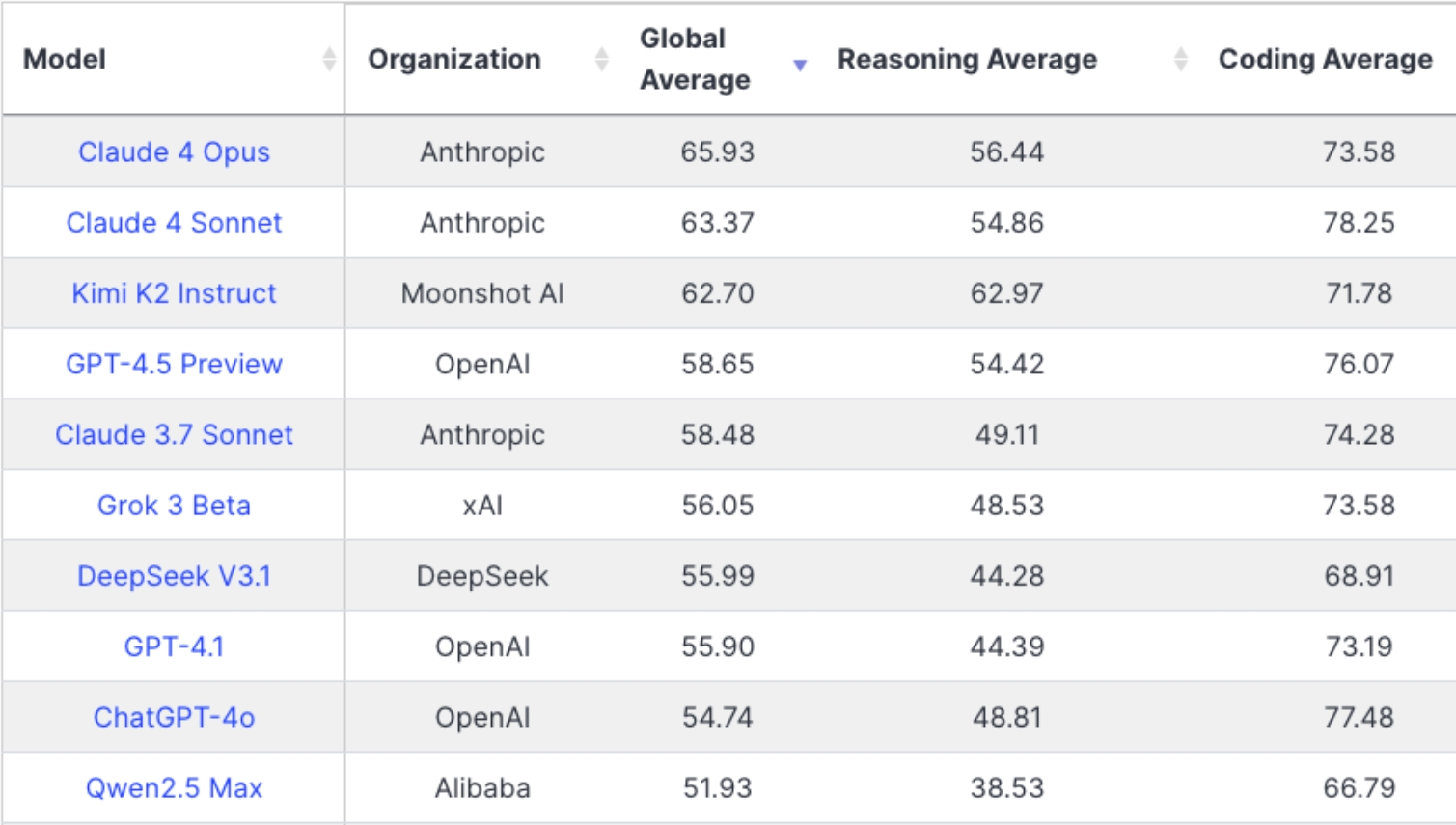Recently, the field of artificial intelligence has witnessed a significant breakthrough—Kimi-2 has officially launched on the LiveBench AI platform and is planned to be released on the ChatLLM platform the following day. This news has quickly attracted widespread attention in the industry, with Kimi-2 being regarded as an important milestone in the development of AI models due to its outstanding performance and open-source characteristics. Below are the latest updates and key information about Kimi-2 compiled by AIbase.

Kimi-2 Demonstrates Outstanding Performance
Kimi-2 is a mixture-of-experts (MoE) model developed by an open-source team, featuring 32B active parameters and 1T total parameters. After optimization through Muon, it has shown impressive performance in tests such as LiveCodeBench. According to reports, Kimi-2 surpasses Claude Opus4 and GPT-4.1 in code generation capabilities, becoming one of the top non-inference models, ranking third globally, behind Sonnet and Opus.
In terms of agentic abilities, Kimi-2 also performs exceptionally well, comparable to the top Gemini models. This powerful performance makes it highly promising for practical applications, especially in fields requiring complex task processing and efficient computation.
Cost Advantages and Open-Source Nature
Another highlight of Kimi-2 is its highly competitive pricing. Compared to models like Gemini, the API pricing of Kimi-2 is as low as $0.15 per million tokens, significantly reducing the cost for developers and enterprises. At the same time, as an open-source model, Kimi-2 provides greater flexibility and innovation space for global developers, marking a major victory for the open-source AI community.
Currently, Kimi-2 has been integrated into the Kimi application, allowing users to experience its features for free, while API services have also been opened up, paving the way for commercial applications.
The launch of Kimi-2 not only brings new vitality to the LiveBench AI and ChatLLM platforms, but also further promotes the development of the open-source AI ecosystem. Its high performance and low cost are expected to attract more developers to build applications based on Kimi-2, potentially driving more innovations in areas such as intelligent assistants, code generation, and data analysis.
AIbase believes that the release of Kimi-2 is one of the important events in the AI field in 2025. It not only demonstrates the strong technical capabilities of the open-source community but also sets a new benchmark for the industry. In the future, the performance and application scenarios of Kimi-2 are worth continuous attention.
